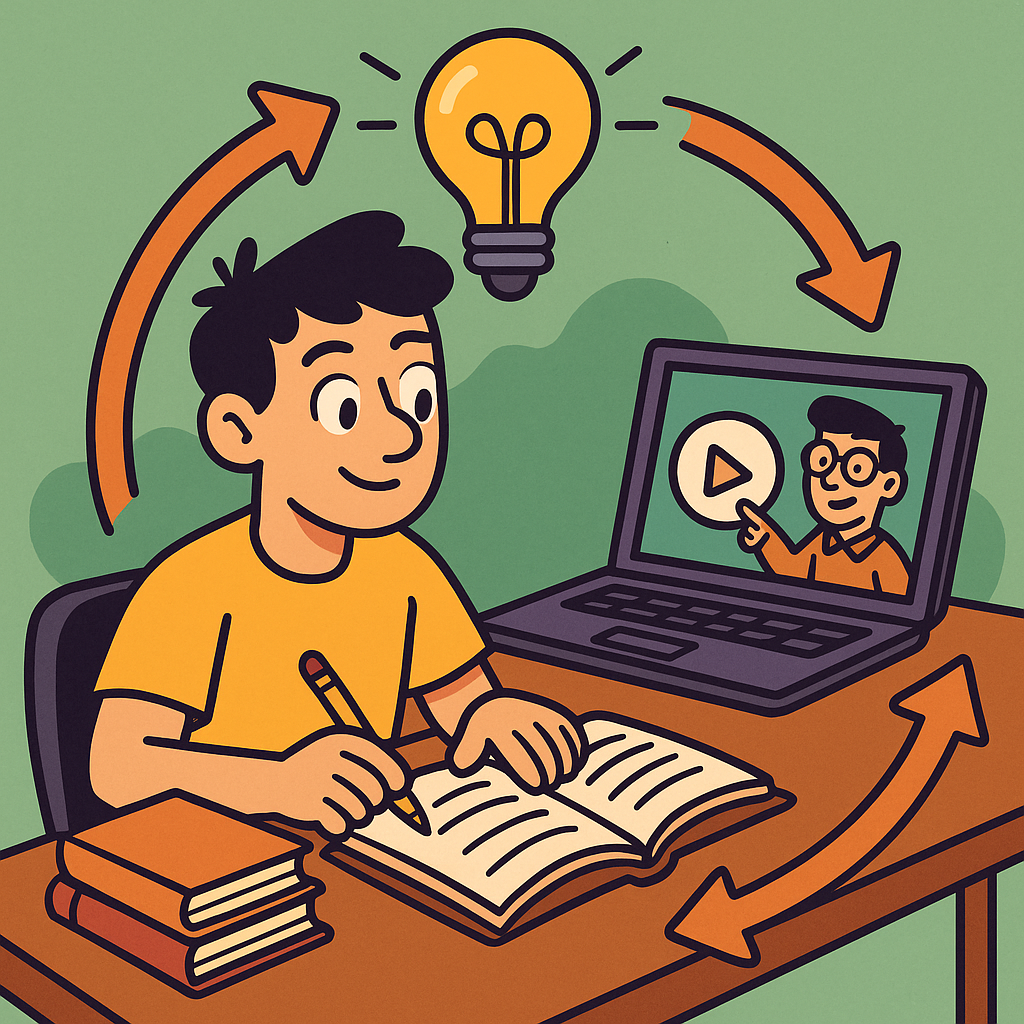Building a personal learning loop means creating a dynamic cycle—learn, apply, reflect, repeat—to stay ahead in today’s fast-paced world. Let’s explore how AI, microlearning, and structured reflection work together to make this loop efficient and meaningful.

Why the personal learning loop matters now
With the rise of generative AI like LLMs (e.g., GPT-4, Bard), we’re entering an era of reciprocal human–machine learning: where AI tutors you, you correct it, and both improve. Combine this with proven methods like adaptive learning systems, and you get powerful, personalized feedback loops.
The 4 stages of your personal learning loop
1. Acquire knowledge effectively
- Use AI chatbots (e.g., GPT‑4) as on-demand tutors for targeted questions.
- Embrace adaptive platforms: studies show 86% of adaptive-learning implementations yield better outcomes.
- Opt for microlearning: short, focused sessions improve retention and motivation.
2. Apply knowledge purposefully
- Practice immediately: solve problems, work on projects, or engage in simulated tasks.
- Make it contextual: tailor the task to your real challenges to cement learning.
3. Gather feedback smartly
- Use AI to review and critique your output—code, essays, ideas.
- Gather human feedback from peers or mentors for richer insight.
- Use learning analytics dashboards to track progress and recognize weaknesses.
4. Reflect and adjust
- Regularly journal what worked and what didn’t—what decisions led to what results.
- Ask: “Why did this approach succeed or fail?” This is double-loop learning—questioning your assumptions.
- Create action plans: refine goals and strategies for the next iteration.
Trend spotlight: AI-powered flipped lifelong learning
Emerging frameworks (e.g., “Flipped” University) encourage learning cycles where you…
- Ask AI to summarize or teach a concept.
- Apply it through mini-projects or experiments.
- Reflect—via writing or dialogue—with the AI tutor.
- Iterate based on evolving goals.
This creates a self-sustaining personal learning loop, driven actively by AI and guided by structured metacognition.
Step-by-step guide: launch your learning loop today
1: Define a narrow, growth-centric goal
Example: “Master prompt engineering basics in 30 days.”
2: Build your learning toolkit
- AI chatbots: Ask for explanations, examples, quizzes.
- Adaptive microlearning: Use platforms like Anki, Duolingo, or Skillshare.
- Reflection tools: One-line journal or voice memo apps.
3: Schedule short cycles
- Daily micro-sessions (10–20 min): Learn a concept + practice + quick AI feedback.
- Weekly reflection (30 min): Review what’s solid and where to pivot.
4: Use feedback loops
- Have AI grade or critique your work, ask for improvement suggestions.
- Engage a peer coach or mentor; scale feedback with quantified performance metrics.
5: Adjust based on reflection
- Are your methods effective?
- Do you need to shift focus or stretch difficulty?
- Are you engaging too passively? Try project-based learning next cycle.
Practical tools to power your loop
| Category | Tools & Benefits |
|---|---|
| AI tutoring | ChatGPT, Claude – on-demand explanations & feedback |
| Adaptive microlearning | Anki, Brainscape – spaced repetition |
| Analytics dashboards | Khan Academy, edX – track progress & spot weak areas |
| Reflection journals | Roam Research, Workflowy – maintain insights over time |
Pitfalls & how to avoid them
- Shallow interaction with AI: Don’t just read—do quizzes and respond.
- Skipping steps: Without reflection, it becomes mindless consumption.
- Static goals: Reassess your goals weekly and raise the bar.
The future of your personal learning loop
Expect these innovations to shape your loop:
- Wearable cognition tracking (EEG headbands) to trigger adaptive micro-lessons based on brain state.
- Reciprocal AI systems that adapt to your feedback and prompt you to reflect.
- Franchise-style flipped learning—learners own their loop; institutional structures support rather than dictate.
Conclusion
A personal learning loop is your strategic engine for growth: learn → apply → feedback → reflect, repeated. Today’s tools—AI tutors, adaptive microlearning, analytics, cognitive wearables—can supercharge your loop. Follow the steps above to build, refine, and scale your loop. In a world of constant change, it’s the most future-proof learning system you can adopt.
References
Samuel Matthews, The Learning Loop: Why Information‑Seeking Is Procrastination, Sammatla (2024). Available at: https://sammatla.com/the-learning-loop/
Hubken Group, What is a Learning Loop? The Ultimate Guide (2023). Available at: https://www.hubkengroup.com/resources/what-is-a-learning-loop
Scrum.org, Maximize Value with The Learning Loop (2025). Available at: https://www.scrum.org/resources/blog/maximize-value-learning-loop






